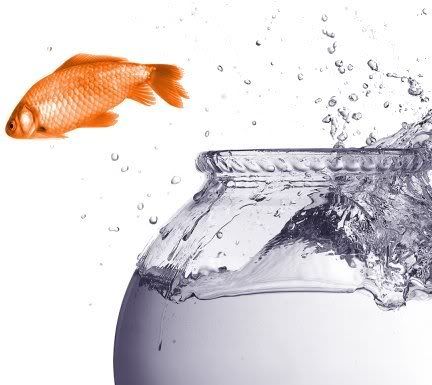If we all worked on the assumption that what is accepted as true is really true, there would be little hope of advance. - Orville Wright
Education can be a wonderful thing as long as it is not just pepetuating false assumptions.
Dr Ioannidis began his study by reviewing 49 research articles printed in widely read medical journals between 1990 and 2003. Each of these articles had been cited by other scientists in their own papers 1,000 times or more. However, 14 of them—almost a third—were later refuted by other work. Having established the reality of his point, he then designed a mathematical model that tried to take into account and quantify sources of error. Again, these are well known in the field.
One is an unsophisticated reliance on “statistical significance”. To qualify a result as statistically significant, the probability that it is the result of pure coincidence should be smaler than 1:20. But, as Dr Ioannidis points out, adhering to this standard means that simply examining 20 different hypotheses at random is likely to give you one statistically significant result. In fields where thousands of possibilities have to be examined, such as the search for genes that contribute to a particular disease, many seemingly meaningful results are bound to be wrong just by chance.
In this framework, a research finding is less likely to be true when the studies conducted in a field are smaller; when effect sizes are smaller; when there is a greater number and lesser preselection of tested relationships; where there is greater flexibility in designs, definitions, outcomes, and analytical modes; when there is greater financial and other interest and prejudice; and when more teams are involved in a scientific field in chase of statistical significance.
When Dr Ioannidis ran the numbers through a simulation, his model predicted that even a large, well-designed study with little researcher bias has only an 85% chance of being right. An underpowered, poorly performed drug trial with researcher bias has but a 17% chance of producing true conclusions. Overall, the model predicts that more than 50% of all published research is probably wrong.
- Read
whole article here.
Because the educated professionals have invested a lot of time and money in studying current thinking, they are reluctant to discard any of it. This is despite the fact that modern medicine really has very few accomplishments to take credit for and diseases that have been around for centuries will probably be attacking future generations.
This is an incomplete list of incurable diseases:
Acute Lymphocytic Leukemia
Acute Myeloid Leukemia
Acquired Immune Defficiency Syndrome (AIDS) see also HIV
Adrenoleukodystrophy (ALD)
Alzheimer disease
Amyotrophic Lateral Sclerosis (ALS,Lou Gehrig's disease)
Aspartylglucosaminuria
Asthma
Attention Deficit Disorder (ADD)
Autism
Avian Influenza
B-Mannosidosis
Batten disease (Juvenile Neuronal Ceroid Lipofuscinosis)
Bovine Spongiform Encephalopathy (BSE, "Mad Cow" disease)
Bipolar disorder (Manic-depression)
Chronic lymphocytic leukemia (CLL)
Chronic myeloid leukemia (CML)
Creutzfeldt-Jakob Disease (CJD) see also Bovine Spongiform Encephalopathy and Kuru
Common Cold
chicken pox aka Herpes Zoster aka varicella-zoster aka Shingles
Currarino Triad
Cystic Fibrosis
Cystinosis
Dementia
Diabetes
Dysmyelogenic leukodystrophy (DMD a.k.a. Alexander disease)
Ebola
Emphysema (C.O.P.D.)
Farber disease
Fatal Familial Insomnia
Fibrodysplasia ossificans progressiva
Flu
Fucosidosis
Galactosialidosis (Goldberg syndrome)
Gaucher disease
GM1 Gangliodsidosis
Hairy cell leukemia
Herpes Zoster aka varicella-zoster aka chicken pox
Hopeless Astrocytoma (Brain Cancer)
Hurler syndrome (includes Hurler-Scheie)
Hunter syndrome
Infantile Neuronal Ceroid Lipofuscinosis
Infertility
Krabbe disease
Kuru see Creutzfeldt-Jakob Disease
Lissencephaly
Lymphocytic Lymphomas
Hodgkin Lymphoma
Non-Hodgkin lymphoma
Small lymphocytic lymphoma
Maroteaux-Lamy
Measles
Metachromatic Leukodystrophy (MLD)
Morquio A
Mucolipidosis II (I-Cell Disease)
Mucolipidosis IV
Multiple sclerosis (MS)
Niemann-Pick disease, Types A and B
Polio
Pompe disease
Prosaposin
Progeria
Pseudomyxoma peritonei
Psoriasis
Salla disease
Sandhoff disease
Sanfilippo A
Scheie syndrome
Schindler disease
Schizophrenia
Sialidosis (Mucolipidosis I)
Sly syndrome
Spreading Adenocarcinoma
Spreading Melanoma
Takayasu's arteritis (Pulseless Disease)
Tay-Sachs disease
Tinnitus
Wolman disease


